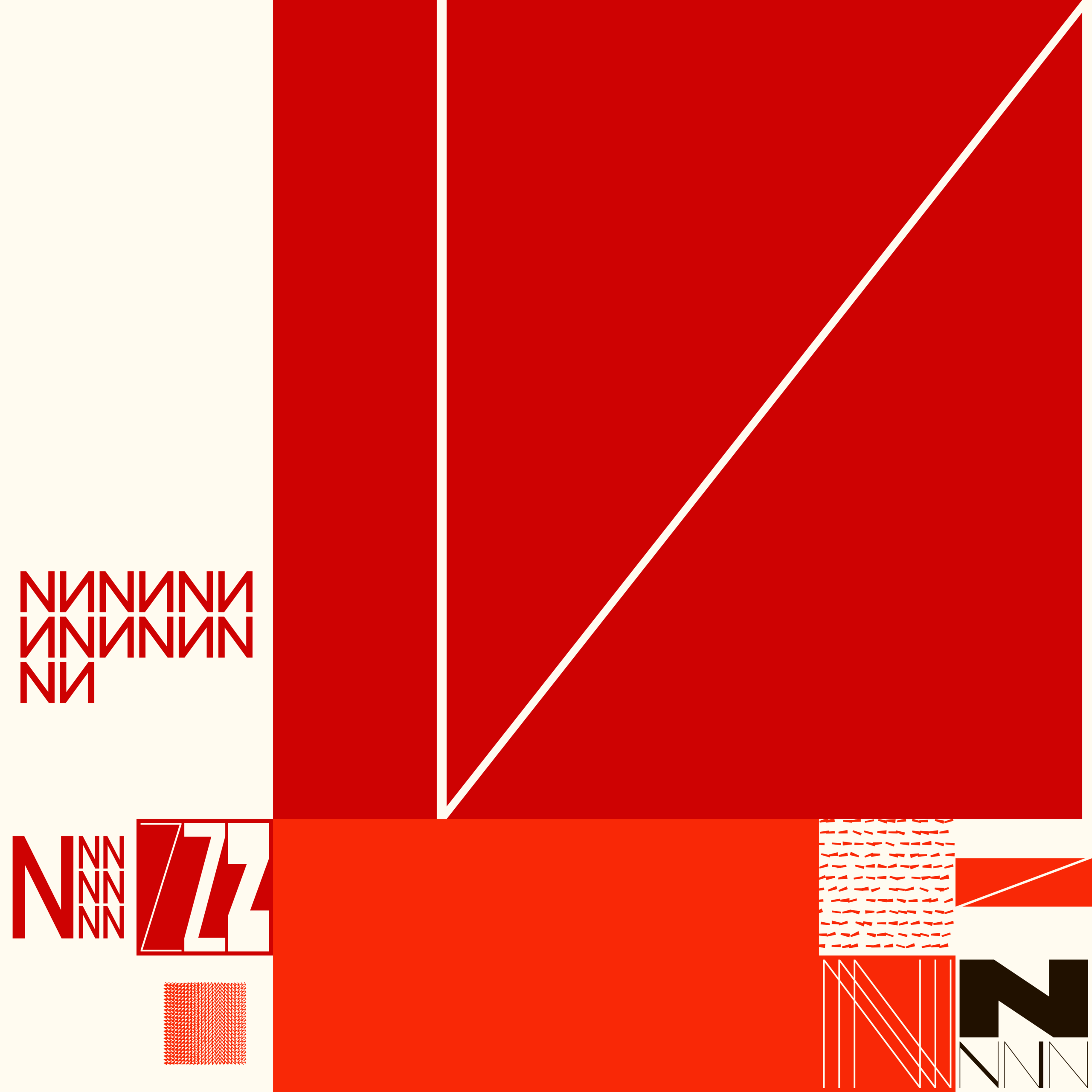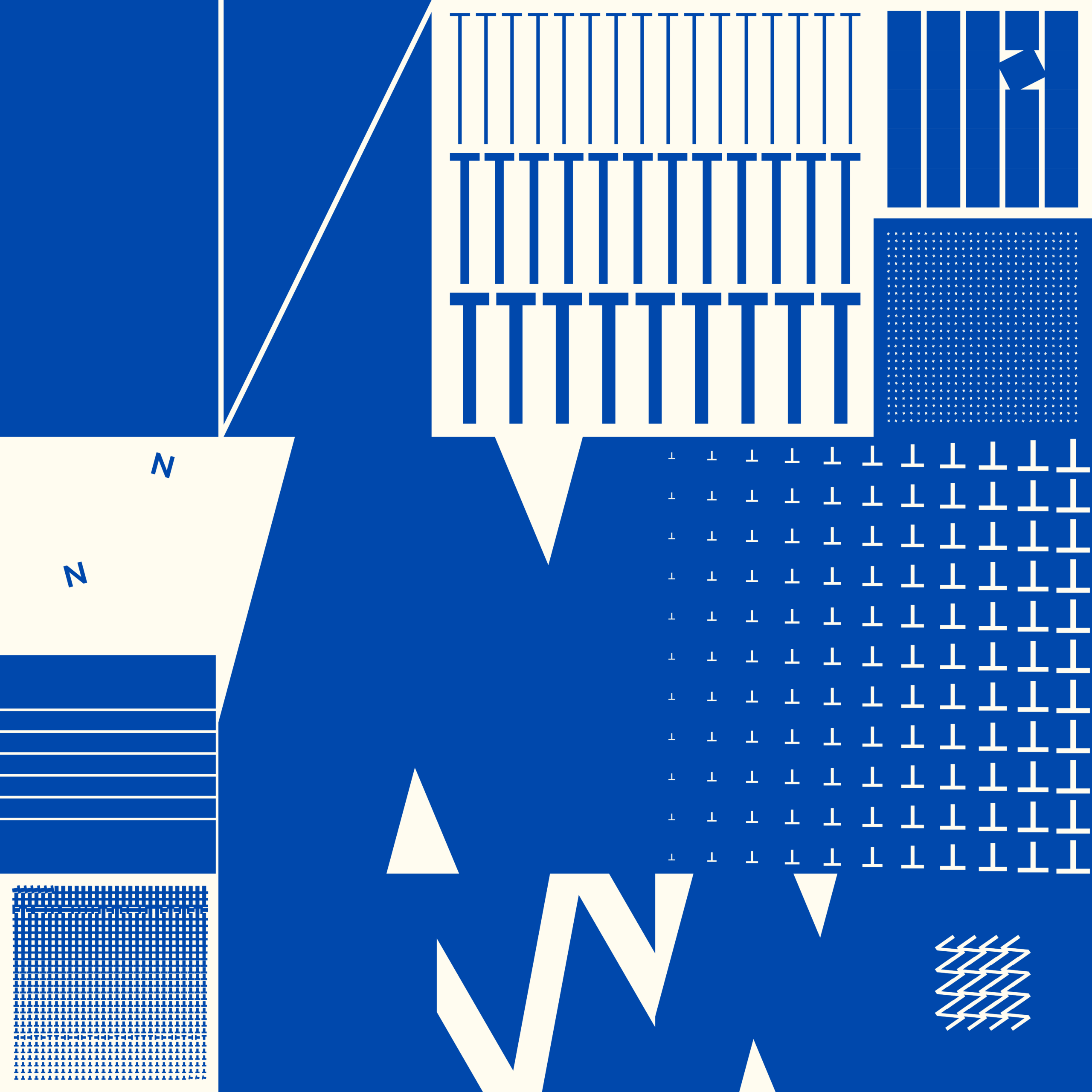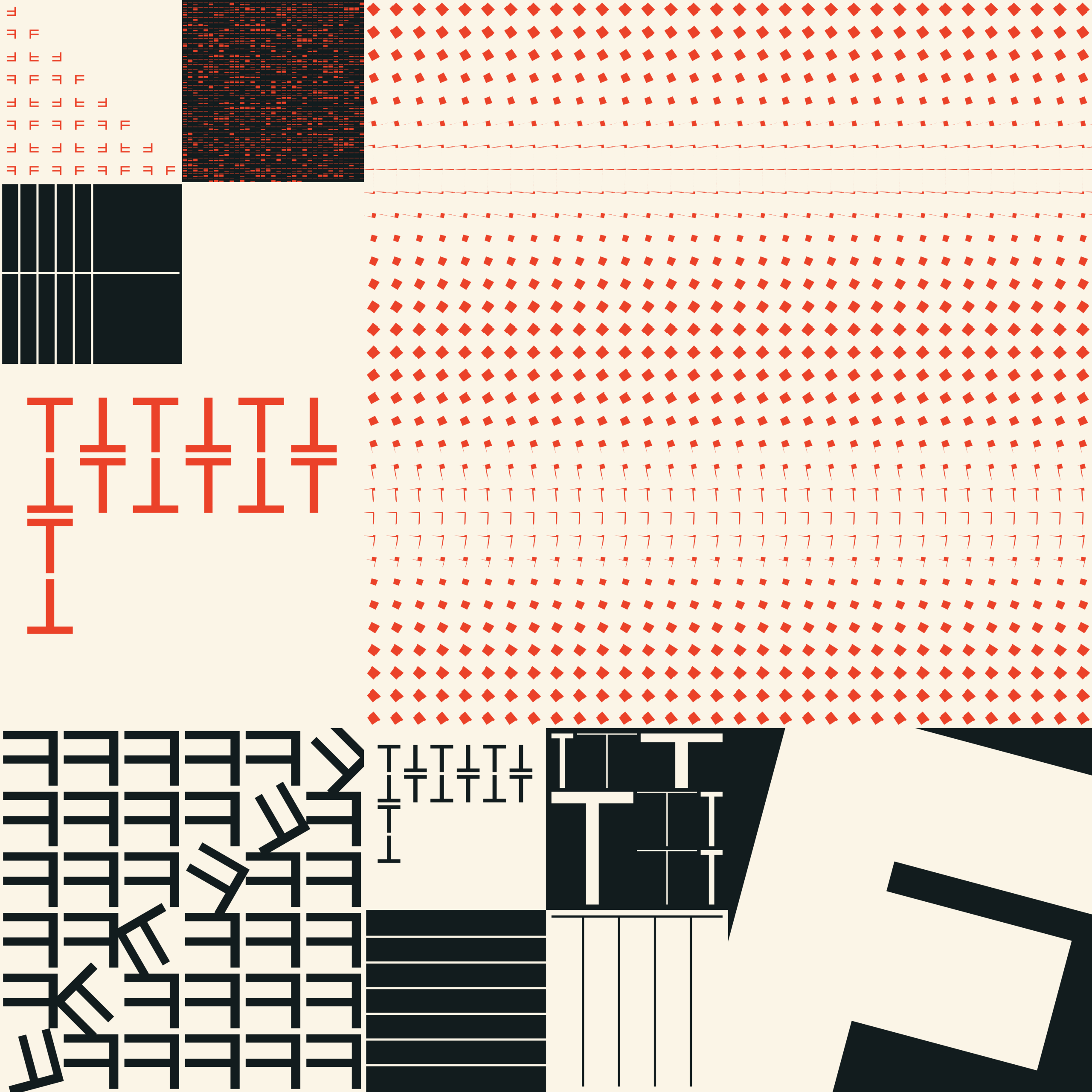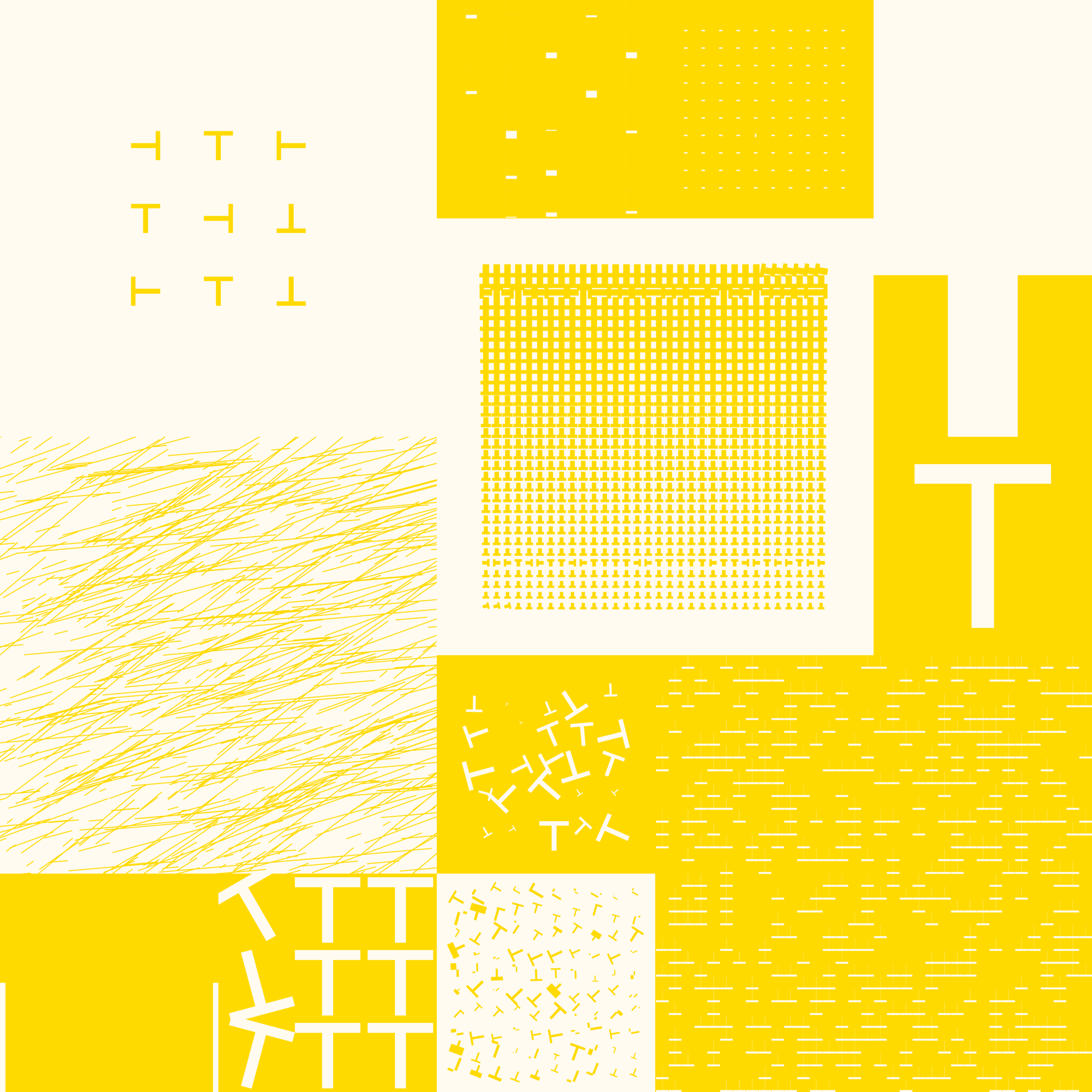
Themes & Variations #51
On-chain algorithm, NFT, and Ethereum blockchain, 2023
Private collection
Toward the end of her life, Vera Molnár found herself celebrated as the “godmother of generative art” by a new generation of artists working with blockchain technology and non-fungible tokens (NFTs). At the age of 99, she released Themes and Variations, a collection of 500 unique computer-generated works created in collaboration with artist Martin Grasser. This would be her first and only blockchain-native work. She passed away later that year.
Themes and Variations pays homage to many of Molnár’s long-standing motifs: grids, geometric abstraction, order and disorder, and typographic text. Molnár played with the letters N, F, and T as abstract forms reduced to triangles, rectangles, and squares. She rotated, stretched, and pushed them to the limits of legibility. “All these variations around letters resonate in me like music,” she said. “I immediately think of Goldberg Variations or Beethoven’s Diabelli Variations on a Waltz.”
©2025 Artists Rights Society (ARS), New York / ADAGP, Paris
Art created using autonomous systems like computer algorithms, AI models, or rule-based processes where the artist sets up initial parameters but then allows the system to independently produce or contribute to the
final artwork. The artist designs the process rather than directly creating every element, embracing randomness, complexity, and emergence to produce results that often could not be fully predicted beforehand.
A digital ledger that stores information across many computers instead of one central location. Each new record links to previous ones, forming a secure chain of “blocks” (packages of encrypted data) that is extremely difficult to alter or hack. Blockchain technology has been used to create cryptocurrencies and non-fungible tokens (NFTs) due to its ability to securely record transactions without requiring the authentication of a centralized regulatory body.
A unique digital certificate stored on a blockchain that proves ownership of a specific digital asset like artwork, music, or videos. An NFT works like a contract of ownership, recording data like sales and trading information. Unlike cryptocurrencies, each NFT is non-fungible, meaning it’s one-of-a-kind and cannot be exchanged equally with another, making it ideal for digital collectibles.


